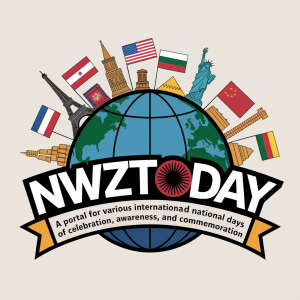Every year on September 17, the world unites to acknowledge an important yet often overlooked aspect of healthcare: patient safety. As we gear up to observe World Patient Safety Day 2025, it’s time to delve into why this day holds immense significance for everyone — from healthcare providers to patients and their families.
Why is World Patient Safety Day Celebrated?
Healthcare is a cornerstone of well-being, but even within this vital system, errors can occur. World Patient Safety Day was established to bring attention to the need for safer healthcare systems, to reduce errors, and to ensure that every individual accessing healthcare services does so with trust and confidence. It’s a global call to action to prioritize patient safety in every healthcare setting.
The theme for 2025 is “Empowering Patients for Safer Healthcare”, a reminder that achieving safety is a collaborative effort between healthcare providers and patients themselves.
The History of World Patient Safety Day
World Patient Safety Day was introduced by the World Health Organization (WHO) in 2019. Since then, it has become an annual observance, shedding light on patient safety issues across the globe. The day serves as a platform for raising awareness, sharing knowledge, and fostering a culture of safety in healthcare. Its foundation lies in WHO’s commitment to achieving universal health coverage and addressing preventable harm in healthcare systems worldwide.
Why is Patient Safety Significant?
Did you know that unsafe healthcare practices are among the leading causes of death and disability worldwide? From medication errors to infections acquired in hospitals, preventable mistakes can have devastating consequences. World Patient Safety Day shines a spotlight on these issues, encouraging governments, organizations, and individuals to take concrete steps toward creating safer healthcare environments.
It’s not just about healthcare providers; patients and families play a vital role too. Being informed, asking questions, and advocating for oneself are essential steps in ensuring safe and effective care.
How is World Patient Safety Day Observed?
On this day, healthcare institutions, governments, and organizations worldwide come together to host events, campaigns, and educational webinars. Hospitals may light up their buildings in orange — the official color of patient safety — and organize training sessions for staff. Communities are encouraged to participate in open discussions about the importance of patient safety and share stories that highlight both challenges and successes in the healthcare system.
Social media also plays a pivotal role, with hashtags like #WorldPatientSafetyDay and #PatientSafetyFirst trending to spread the message far and wide.
Fun Facts About Patient Safety
- The concept of patient safety dates back centuries, with early practices rooted in the Hippocratic Oath: “First, do no harm.”
- Studies show that engaging patients in their own care can reduce medical errors by up to 50%.
- Globally, around 134 million adverse events occur annually in hospitals, many of which are preventable.
How Can You Make a Difference?
As a patient, you can contribute to safer healthcare by staying informed, asking questions, and actively participating in your care decisions. As a healthcare professional, committing to continuous education and adopting best practices can drastically reduce risks. And as a policymaker or organization, advocating for systemic changes can create lasting impacts.
Join the movement this September 17 by attending a local event, sharing your stories on social media, or simply having a conversation about patient safety with friends and family. Together, we can make a difference!
A Call to Action
This World Patient Safety Day, let’s pledge to prioritize safety in healthcare. Whether it’s by supporting awareness campaigns, advocating for policy changes, or simply educating ourselves, every effort counts. Remember, safer healthcare begins with all of us working together.
Mark your calendars for September 17, 2025, and be part of this global movement for change. Because when it comes to health, safety should never be optional!









